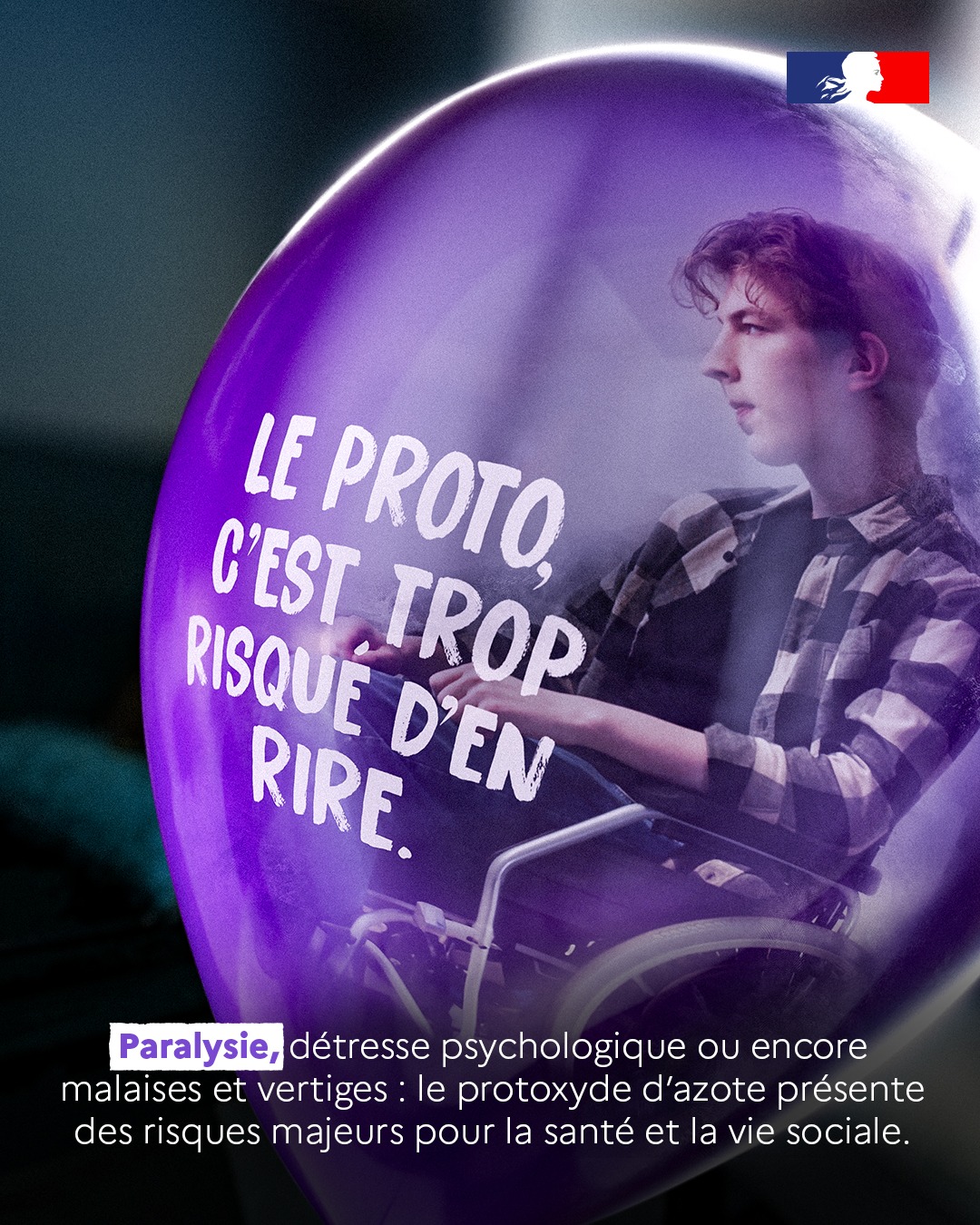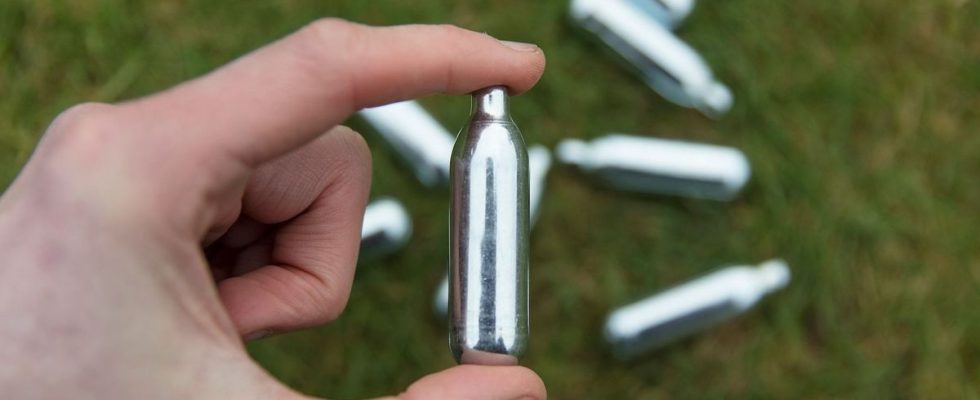Published on
Updated
Reading 2 min.
Faced with the growing damage caused by the diversion of nitrous oxide, the campaign “The proto, it’s too risky to laugh about it” wants to remind people that this gas is far from being harmless: neurological damage, dizziness, addictions, problems erection…
A boom in nitrous oxide consumption
Launched by the regional health agencies of Hauts de France and Ile de France, this campaign was launched in response to the considerable increase in the misuse of nitrous oxide in these regions since 2017. Consumers, mainly adolescents and young adults, seek the euphoric effect of this “laughing gas”.
Although it is in reality difficult to precisely assess the extent of these diversions, certain signs testify to increasing consumption: more and more metal cartridges and canisters found on public roads, evocations of this famous gas on social networks… Within health establishments, we are also seeing more and more young people suffering from neurological disorders or victims of accidents, following the consumption of nitrous oxide.
According to a survey carried out by Santé Publique France on the level of consumption, “13.7% of young people aged 18 to 24 have already consumed nitrous oxide at least once in their life..
The many risks of the “proto”
Nitrous oxide, commonly known as “proto”, is a colorless gas with a slightly sweet odor and flavor. It is used for its anesthetic function in medical settings or in whipped cream siphons in the kitchen. However, young people use it in a roundabout way by inhaling it as laughing gas, in order to benefit from its euphoric effect. This latter use makes it a dangerous and addictive product which presents many risks.

According to the Regional Health Agency (ARS), the symptoms resulting from the consumption of proto are multiple for the person who consumes it. Indeed, there are neurological signs which can manifest as a loss of sensitivity, or cognitive disorders such as loss of language or memory. For some, the consumption of this gas can lead to serious psychological disorders such as hallucinations, and in the most serious cases, suicidal ideas. Physically, nitrous oxide can cause injurious falls and cardiovascular problems.
Beyond the risks for the person who consumes this gas, the campaign also raises awareness of the fact that it can represent a danger for others by causing road accidents, but also through soil pollution due to empty capsules left on the public highway.
A campaign that speaks to young people
This campaign obviously aims to inform young people of the dangers linked to the consumption of nitrous oxide and thus to reduce its attractiveness. But she also wants to encourage health professionals to talk more about the consumption of this product, and to support victims.
To meet these objectives, the creative strategy of the campaign is based on three complementary axes: audio and video spots presenting risks, an educational video as well as a kit allowing partners to relay the information.
The testimonies are used to capture the attention of young people, in particular by making them aware that the situations are varied and can become serious while affecting their daily lives (discomfort in the evening, sexual breakdown or paralysis). These spots are broadcast on social networks used by 15-25 year olds. The educational video is produced by journalist Jamy Gourmaud, well known to young people.
The campaign is broadcast on its own social networks, by the two ARS and on the website lets-talk-proto.fr created as part of the campaign.
